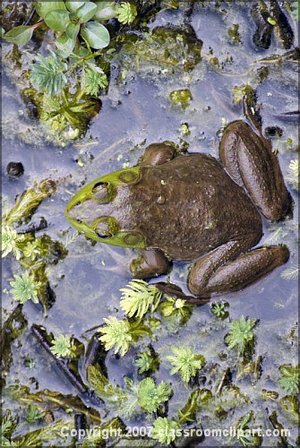Cold-blooded
|
|
| Revision as of 01:17, 24 Nov 2012 AcademicSysop (Talk | contribs) Types of temperature control ← Go to previous diff |
Revision as of 01:17, 24 Nov 2012 AcademicSysop (Talk | contribs) Types of temperature control Go to next diff → |
||
| Line 5: | Line 5: | ||
| ==Types of temperature control== | ==Types of temperature control== | ||
| - | [[Image:Frog_crca_water.jpg|thumb|300px] | + | [[Image:Frog_crca_water.jpg|thumb|300px]] |
| Examples of this temperature control include: | Examples of this temperature control include: | ||
| * [[Snake]]s and [[lizard]]s sunning themselves on rocks. | * [[Snake]]s and [[lizard]]s sunning themselves on rocks. | ||
Revision as of 01:17, 24 Nov 2012
Cold-blooded organisms, are animals that have no internal metabolic mechanism for regulating their body temperatures. Some (usually smaller) animals have unregulated temperatures, but most have sophisticated physiological and behavioral techniques for obtaining their desired core body temeprature from the environment. Cold-blooded animals are often referred to as ectotherms.
Ectotherms depend largely on external sources of heat, such as solar radiation. As the environmental temperature increases, the animal's metabolic rate will increase. Lizards, fish, and amphibians are examples of ectotherms. Whereas an endotherm, or warm-blooded animal will use up to 98% of its energy for heat production, an ectotherm has all this energy available for activity, growth, repair and reproduction.
Types of temperature control
Examples of this temperature control include:
- Snakes and lizards sunning themselves on rocks.
- Fish changing depths in the water column to find a suitable temperature.
- Desert animals burrowing beneath the sand during the day.
- Insects that warm their flight muscles by vibrating them in place.
- Dilating or constricting peripheral blood vessels to adapt more or less quickly to the ambient temperature.
Many warm-blooded, animals also make use of these techniques at times. For example, all animals are at risk of overheating on hot days in the desert sun, and most homeothermic animals can shiver.

